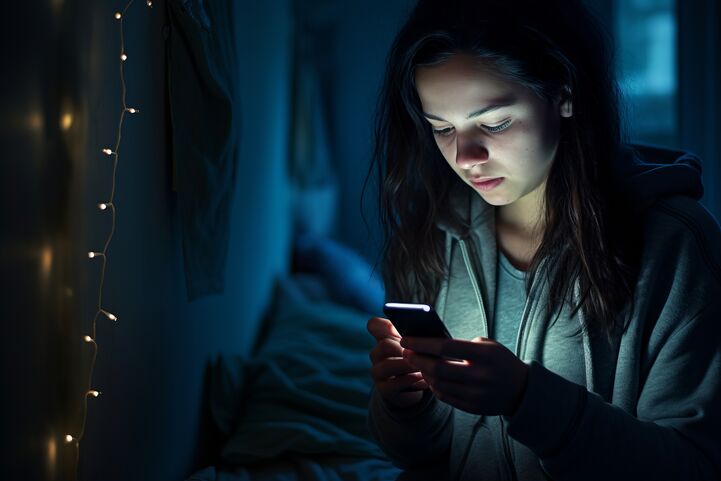Our representatives are available to schedule your appointment Monday through Friday from 9am to 5pm.
For a Northwell ambulance, call
(833) 259-2367.

The U.S. surgeon general’s call for mandatory, tobacco-style warnings on social media to raise awareness about its association with “significant mental health harms” is an important milestone, but we need to go further to ensure young people aren’t addicted to their phones.
As someone who has worked with adolescents on their mental health for 20 years, I found Surgeon General Vivek Murthy’s emphasis on protecting the “real-life connections” young people develop with family and friends just as compelling as a call for warning labels, policy changes and phone-free zones.
The solution to our youth’s social media addiction — beyond aggressive warnings — is literally at our fingertips.: In the psychology world, we call it a “competing response.” It’s part of an older behavioral strategy used to end unwanted, maladapted behaviors like hair pulling, skin picking or cheek chewing. I’ve used it when treating adolescents with tics.
Developing competing responses isn’t about taking away phones, though some limits would be helpful.
A competing response instead helps patients identify and engage in positive, but opposite, behavior that replaces the unwanted behavior.
Yes, it’s tricky to find alternatives to compete with phones. They engage our hands and eyes and they stimulate our brains in ways that are tough to replicate. But it’s possible to swap out phone time when the competing behaviors follow certain rules.
First, we find opposite behaviors that engage the same muscles as the tic. Then patients need to hold those muscles for a certain amount of time, or until the urge to engage in the tic (in this case, reaching for the phone) goes away.
Fortunately, we have ready-made competing responses that can help young people moderate phone use: hobbies. These activities challenge us to create new, competing responses while pushing us to develop skills and, eventually, confidence. Memes are fleeting, but sports, music, sewing, knitting, cooking, working on cars — these teach skills, engage our senses and create lasting memories. The focus doesn’t have to be on mastery and college scholarships. These are hobbies. They center on joy and other people, connections and community.
Research backs up the benefits of non-work creative activities. Studies show leisure activities are associated with more positive mood, as well as lower blood pressure and lower levels of depression. There are even associations between such activities and better work performance.
The adolescents I treat understand phone and social media use aren’t doing them any favors. They know phones can hijack their time, fragment their work and contribute to sleep deprivation.
What they don’t have, though, is an awareness of the array of options for a competing response: other, real activities. That’s on the adults in their lives.
Young people need help finding, choosing and attempting more compelling options – and no, that is not a call for parents to do the work of registering kids for every activity.
Let’s help young people find something they enjoy doing more than using their phones.
This approach can help balance online and IRL (in real life) activities, offering an opportunity to create the lasting, meaningful social and emotional connections that are proven predictors of happiness.
We will have to encourage and model readily accessible alternatives to scrolling. We need to put down our own phones long enough to help them do it.
Laura Braider, PhD, is director of the Behavioral Health College Partnership at Zucker Hillside Hospital, a program providing therapeutic services to college-age teens with behavioral health conditions.
This op-ed originally appeared in U.S. News & World Report.
Our representatives are available to schedule your appointment Monday through Friday from 9am to 5pm.
For a Northwell ambulance, call
(833) 259-2367.